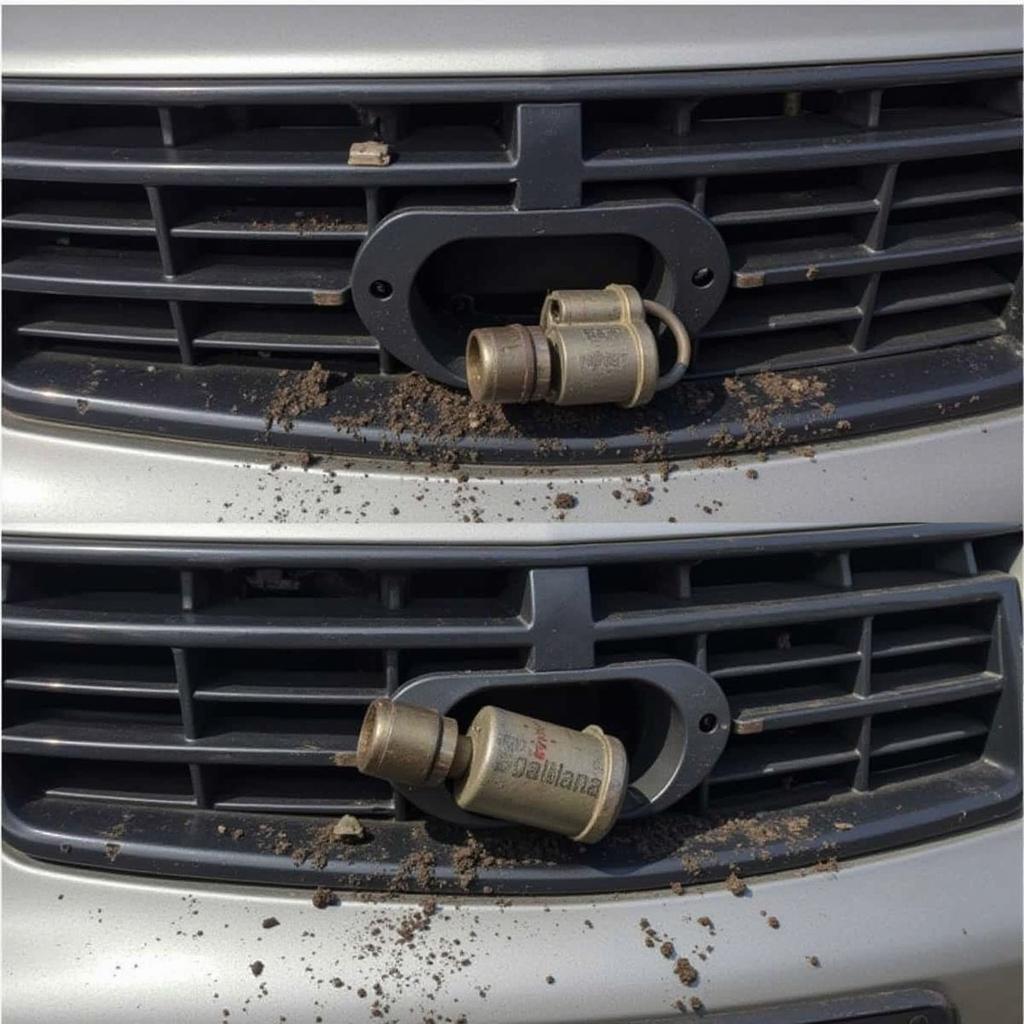The brake warning light on your Mercedes-Benz CLK350 is a crucial safety feature designed to alert you of potential issues with your braking system. When illuminated, it signals that a fault has been detected, and immediate attention is required. While a visit to a qualified mechanic is always recommended for a thorough inspection, there are instances where you might be able to reset the brake warning light yourself.
This comprehensive guide will walk you through the common causes of a CLK350 brake warning light and provide step-by-step instructions on how to reset it. We’ll also delve into the world of remote diagnostics and software solutions that are revolutionizing automotive repair.
Understanding the CLK350 Brake Warning Light
Before attempting to reset the brake warning light, it’s crucial to understand why it illuminates in the first place. Here are the most frequent culprits:
- Worn Brake Pads: One of the most common reasons for the light to come on is worn brake pads. Your CLK350 is equipped with a sensor that monitors pad thickness, triggering the warning light when they wear down to a critical level.
- Low Brake Fluid: Brake fluid is the lifeblood of your braking system, responsible for transmitting force when you press the brake pedal. A leak in the system or low fluid levels can significantly compromise braking performance, activating the warning light.
- Faulty Brake Light Switch: The brake light switch, located near the brake pedal, signals the brake lights to activate when you apply the brakes. A malfunctioning switch can disrupt this signal and trigger the warning light.
- ABS Sensor Issue: Your CLK350’s Anti-lock Braking System (ABS) relies on sensors to monitor wheel speed and prevent wheel lockup during braking. A faulty ABS sensor can disrupt the system and illuminate the warning light.
Resetting the CLK350 Brake Warning Light: A Step-by-Step Guide
Disclaimer: The following instructions are for informational purposes only and should not be considered a substitute for professional advice. Attempting to diagnose and repair your vehicle without proper knowledge and expertise can be dangerous.
If you’re uncomfortable performing these steps or are unsure about your ability to do so safely, consult a qualified mechanic immediately.
Step 1: Check Your Brake Fluid
Park your CLK350 on a level surface and engage the parking brake. Locate the brake fluid reservoir under the hood. The reservoir is usually translucent, allowing you to visually inspect the fluid level. If the fluid is low, carefully top it off with the recommended brake fluid type specified in your owner’s manual.
Step 2: Inspect Your Brake Pads
Carefully examine your brake pads through the spaces between the wheel spokes. You’ll be able to see the thickness of the friction material. If the pads appear significantly worn or close to the wear indicators, replacement is necessary.
Step 3: Check for Visible Leaks
Thoroughly examine the area around the brake fluid reservoir, brake lines, and calipers for any signs of leaks. Look for wet spots, drips, or evidence of fluid accumulation. If you detect a leak, it’s crucial to address it immediately.
Step 4: Resetting the Warning Light (If Applicable)
In some cases, addressing the underlying issue, such as topping off brake fluid or replacing worn brake pads, might automatically reset the warning light. However, if the light persists, you may need to reset it manually.
Note: The procedure for manually resetting the brake warning light on a CLK350 can vary depending on the model year and specific system. Consult your owner’s manual or a reputable online resource for instructions tailored to your vehicle.
Remote Diagnostics and Software Solutions: The Future of Automotive Repair
The automotive industry is undergoing a technological revolution, with remote diagnostics and software solutions rapidly transforming how we diagnose and repair vehicles. These advancements are particularly relevant to issues like resetting brake warning lights.
Here’s how remote diagnostics are changing the game:
- Real-Time Vehicle Data: Imagine plugging a device into your CLK350’s OBD-II port and having a qualified technician miles away access real-time data from your vehicle’s systems. This technology allows for remote diagnostics, eliminating the need for a physical visit in many cases.
- Software Updates and Reprogramming: Many modern vehicles, including the CLK350, rely heavily on software for various functions. Remote software updates and reprogramming can address software glitches that might be triggering the brake warning light.
- Enhanced Troubleshooting: Remote diagnostics provide technicians with deeper insights into your vehicle’s systems, allowing for more efficient and accurate troubleshooting.
Conclusion: Embracing a Proactive Approach to Brake Maintenance
While resetting a CLK350 brake warning light might seem straightforward in some instances, it’s crucial to remember that it’s merely a symptom of an underlying issue. Addressing the root cause is paramount to ensure your safety and the optimal performance of your vehicle.
By embracing a proactive approach to brake maintenance, including regular inspections, timely fluid top-offs, and prompt attention to warning lights, you can enjoy a safer and more enjoyable driving experience.
Remember, when in doubt, consult a qualified mechanic. Your safety and the well-being of your Mercedes-Benz CLK350 are worth the peace of mind.

